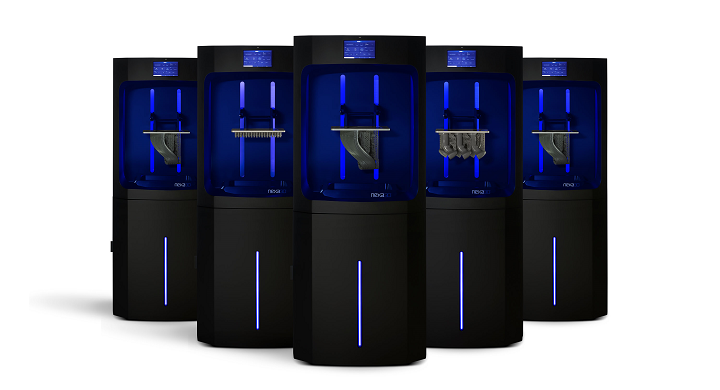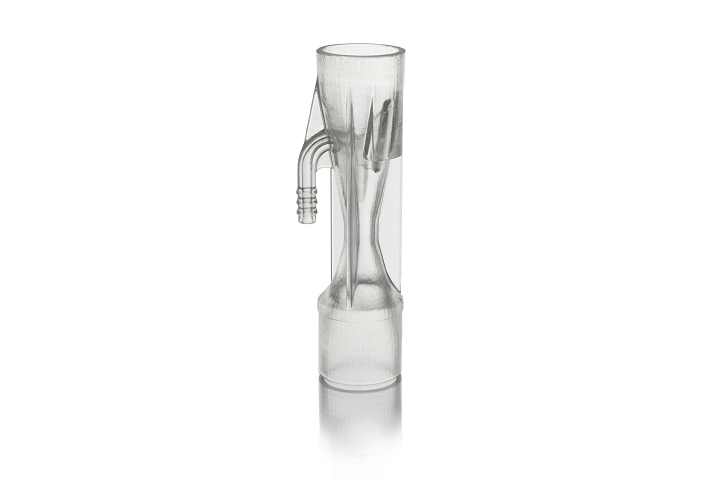This summer, SLA production 3D printer manufacturer Nexa3D and functional additive materials supplier Henkel announced that they were partnering up to commercialize the durable, medical-grade xMED412 material, which was tested by Henkel Adhesive Technologies on the Nexa3D’s ultrafast NXE 400 3D printer. Now, the two have decided to extend their partnership in order to deliver three functional, high-performance 3D printing polymers in a new class of photoplastics. These new materials, powered by Henkel’s Loctite material platform and available immediately through Nexa3D’s rapidly growing network of global resellers, should be good for 3D printing production tools, durable prototypes, and functional end-use parts.
“We believe that our rapidly expanding collaboration with Henkel, now spanning six Loctite materials, coupled with our demonstrated 20X productivity gains achieved by our ultrafast NXE400 3D printer and up to 85% lower total cost of ownership, delivers higher productivity, better extended life functionality and exceptional economics. Both companies are committed to democratizing access to scalable additive polymer solutions, empowering customers to own their supply chain throughout their entire product life cycle from design to production and aftermarket success,” said Nexa3D’s COO Kevin McAlea.
This expanded partnership takes advantage of each company’s particular capabilities in order to fast-track the new photopolymers, and help move 3D printing along to a place where it’s normal to mass produce functional parts for a variety of industries. 3D printing offers rapid implementation during the product life cycle, more design freedom, the ability to fabricate complex geometries, and a more resilient supply chain. So pairing the increasing range of Henkel’s functional polymer materials with Nexa3D’s NXE 400—which is said to increase print speed and productivity by up to 20 times—could really get the ball rolling here.
“We are pleased to further expand our partnership with Nexa3D as Loctite’s portfolio of photo-plastic and photo-elastic materials are well-matched for the higher throughput of the NXE400 3D printer. The Nexa3D team have continued to deliver robust 3D printing solutions, and together we look forward to continuing to deliver an expanded portfolio of production tools, materials, and the validated workflows that the industry requires to realize the full potential of additive production,” stated Ken Kisner, the Head of Innovation for 3D Printing at Henkel.
As Henkel and Nexa3D continue working together, they say their customers will be able to print even more parts, like footwear components, housings, pipes, production tooling, enclosures, and packaging products, and imbue them with more functionality and increased performance.
The first of the pair’s new materials is the tough, semi-rigid xPP405-BLACK, which has a modulus like that of polypropylene and features an industrial black finish. With good impact resistance and high-strength engineering plastic, the material has what Nexa3D calls an “impressive” 130% tensile elongation at failure, and would be a good choice for designing, engineering, and printing end-use parts for different consumer, industrial, and piping applications, like enclosures, sheet metal forming dies, and large housings. xPP405-BLACK also features excellent UV weathering stability as characterized by ASTM G154 testing.
This last feature is also offered by the next new material, xPP405-CLEAR, as well as its polypropylene-like modulus and 130% tensile elongation at failure. Excellent for creating end-use parts like bottling, packaging, piping, and see-through elements for microfluidics and lighting applications, this material can be finished for high clarity, and also features impact strength, toughness, and a good heat deflection temperature between 50° to 60° C.
The last of Nexa3D and Henkel’s newest materials is the tough xPEEK147-BLACK, with its dimensional stability, good solvent resistance, and strong dimensional stability. With a high heat deflection temperature, xPEEK147 offers a good surface finish, and with a higher temperature resistance of up to 230°C with increased stiffness, it’s thermally stable for long periods of time. This material would be great for 3D printing functional end-use parts, like the kind you’d see in automotive underhood applications, as well as molding and production tooling.
(Source/Images: Nexa3D)
Subscribe to Our Email Newsletter
Stay up-to-date on all the latest news from the 3D printing industry and receive information and offers from third party vendors.
You May Also Like
3D Printing Financials: Fathom Struggles in Financial Quicksand During Critical Transition
Facing a year of key transitions and financial pressures, Fathom (Nasdaq: FTHM) has filed its annual report for 2023 with the U.S. Securities and Exchange Commission (SEC). The document outlines...
Latest Earnings Overview for Australian 3D Printing Firms Titomic and AML3D
Australian 3D printing manufacturing firms Titomic (ASX: TTT) and AML3D (ASX: AL3) reported their financial results for the period from July to December 2023, marking the first half of their...
3D Printing Webinar and Event Roundup: April 7, 2024
Webinars and events in the 3D printing industry are picking back up this week! Sea-Air-Space is coming to Maryland, and SAE International is sponsoring a 3D Systems webinar about 3D...
3D Printing Financials: Unpacking Farsoon and BLT’s 2023 Performance
In the Chinese 3D printing industry, two companies, Farsoon (SHA: 688433) and Bright Laser Technologies, or BLT (SHA: 688333), have recently unveiled their full-year earnings for 2023. Farsoon reported increases...


































